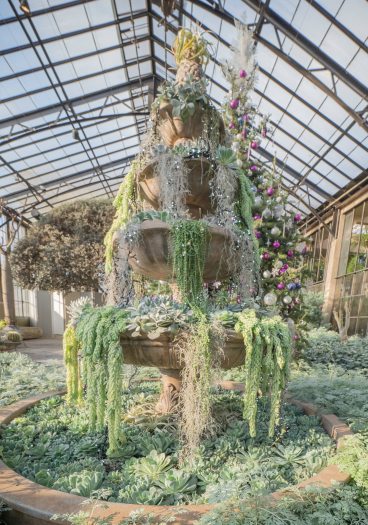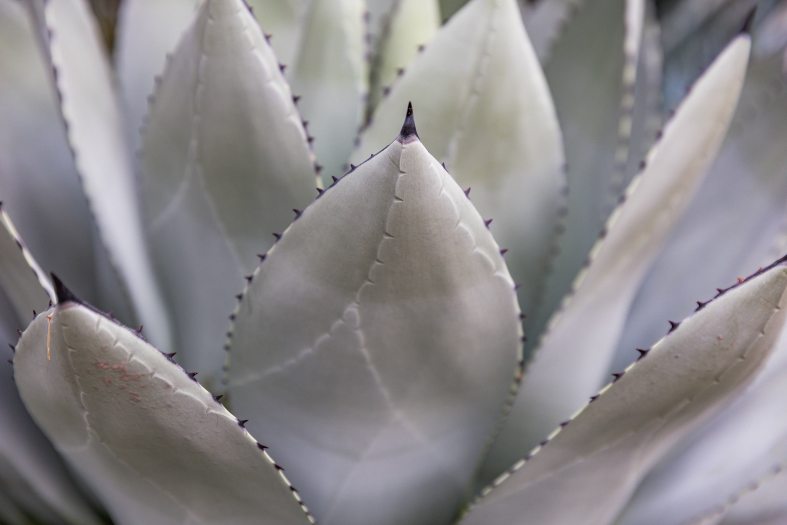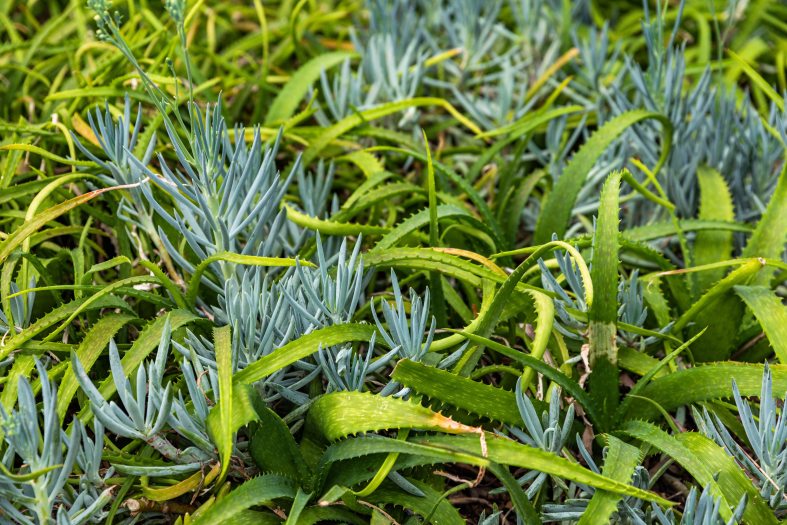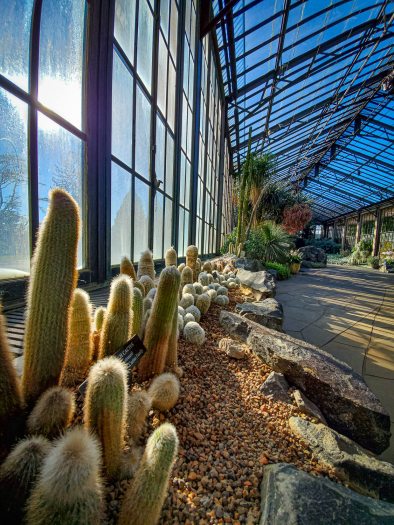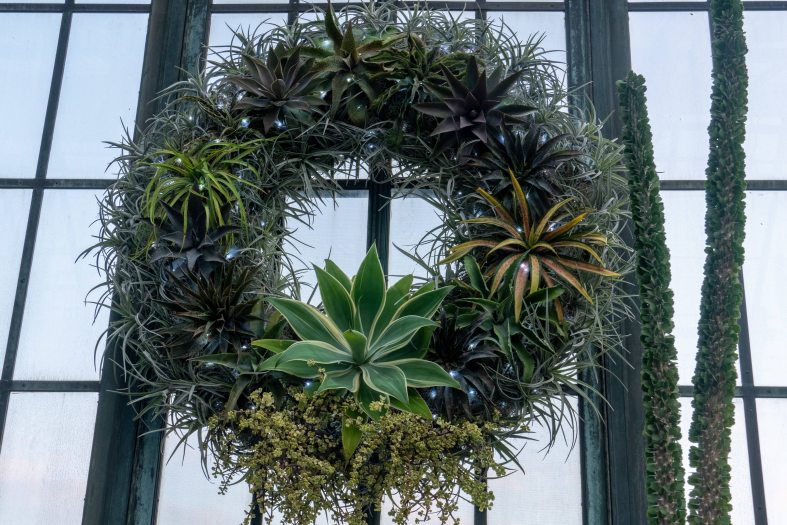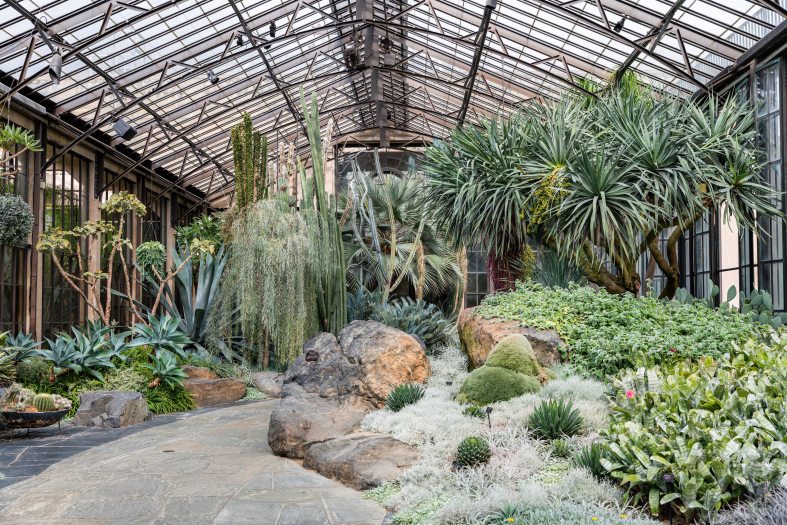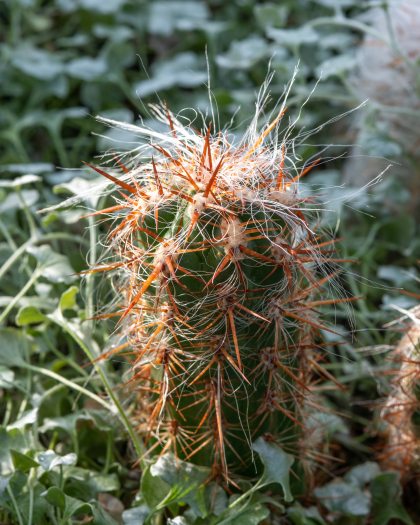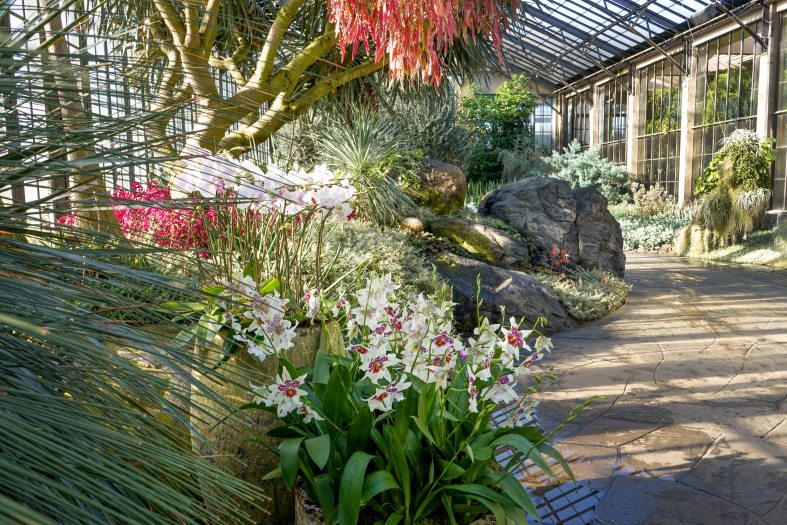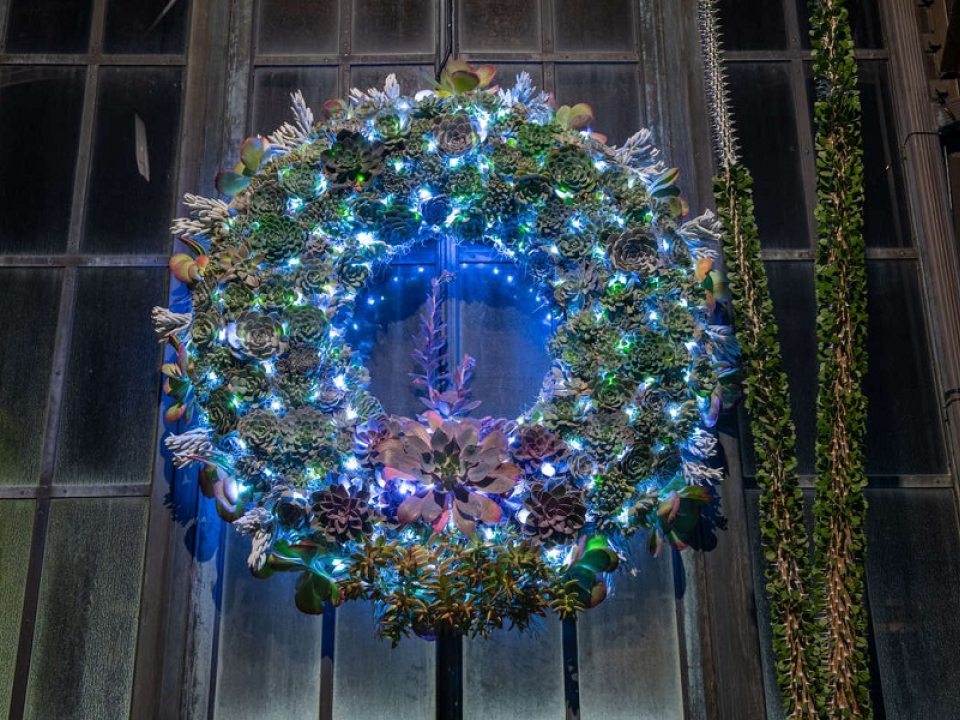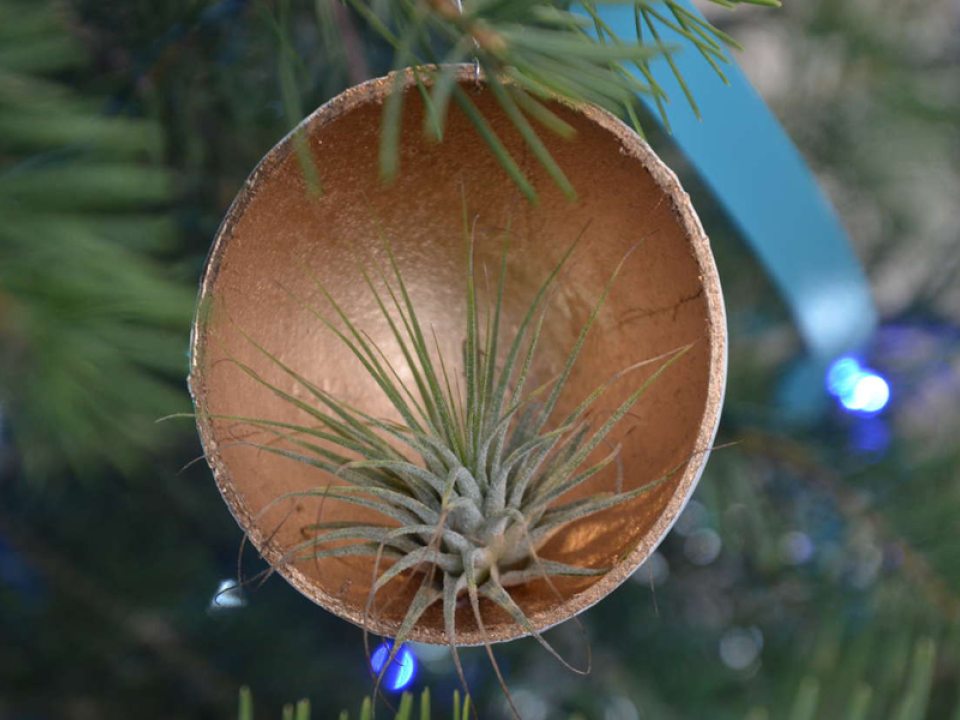In the singular space of the Silver Garden, designed by famed landscape architect Isabelle Greene, you might feel that you’ve wandered into a faraway land. A meandering pathway of slate mimics a dry streambed, snaking through rocky outcroppings and en-masse plantings of spiky, textural plants. Rope-like tendrils of downy spines cascade from above, while barbed foliage fans out in the background, creating a dense, otherworldly fabric of platinum, cool green, and soft blue.
About This Garden + History
When the Conservatory opened in 1921, the greenhouse we now call the Silver Garden was split into three small sections used to grow fruit trees. In the late 1950s, it was redesigned to feature tropical species from the Americas, Asia, and Africa, and renamed the Geographic House. Over the years, as the tropical plants matured, they began to occlude the bright light favored by the Acacia leprosa in the adjacent Acacia Passage. We undertook this dilemma with the same thoughtful, research-based approach that continues today: by exploring alternatives that would not only save our beloved cinnamon wattle trees but also provide our guests with a never-before-seen landscape experience.
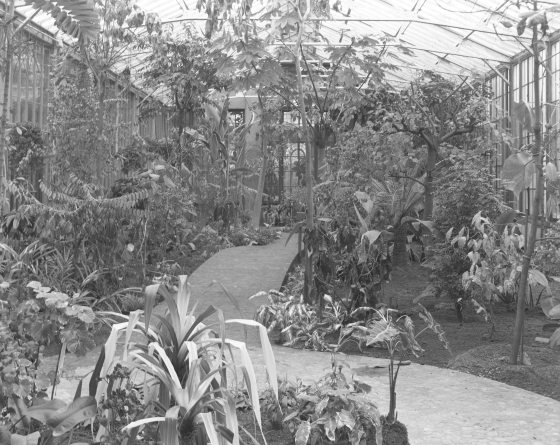
We commissioned renowned landscape architect and California native Isabelle Greene to create the Silver Garden, a modernist display of plants native to Mediterranean and desert climates. With its contemporary design direction, this garden was groundbreaking for us, as well as a visual departure from the formal approach seen throughout the Conservatory complex. After much discussion, we embraced the opportunity to innovate and evolve with Greene. With its angles, slopes, and curves, it conveyed a realistic desert landscape experience that contrasted with the flower-filled Orangery and Acacia Passage. When it opened to the public in 1989, the Silver Garden was overwhelmingly embraced by our guests.

